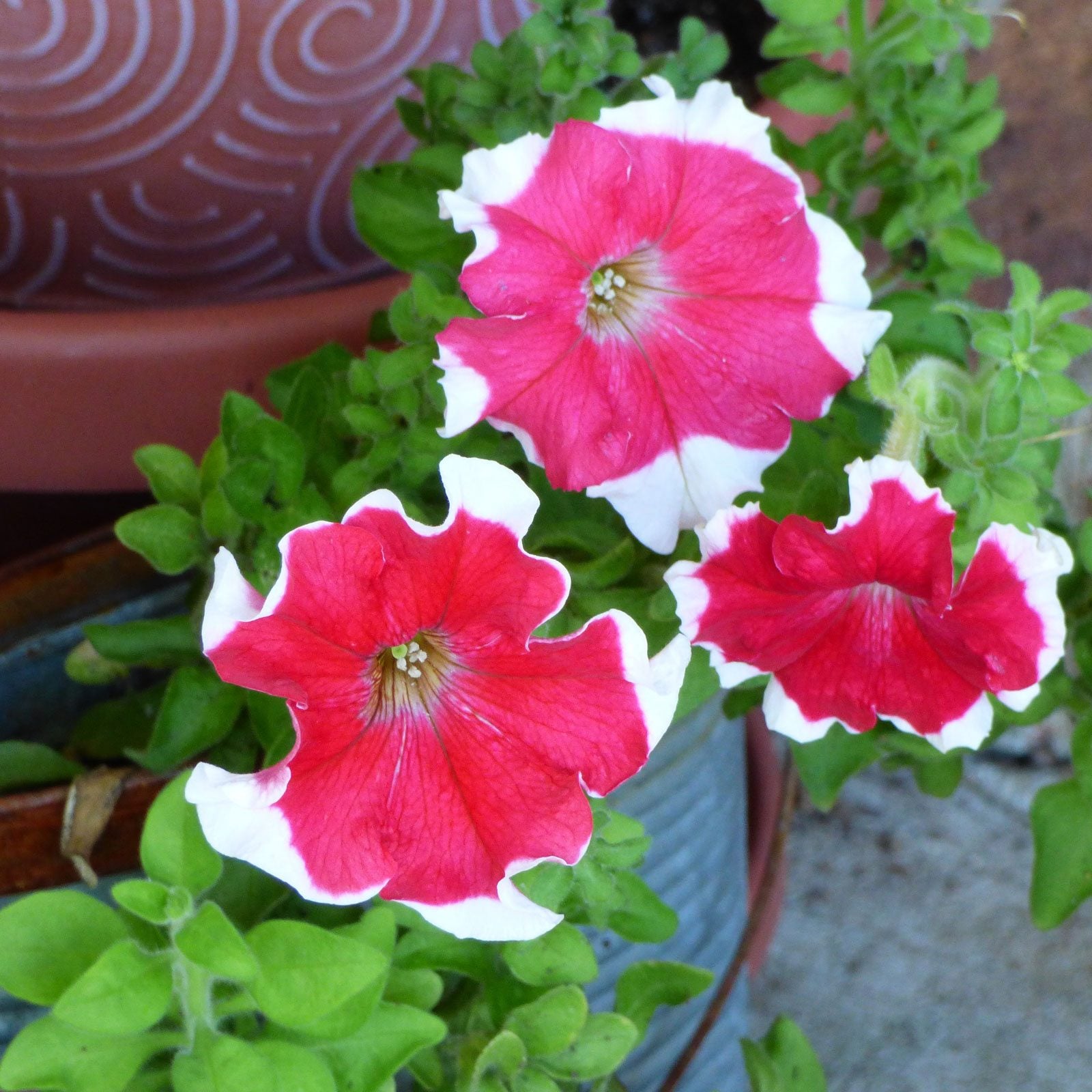Petunia Container Care: Growing Petunias In Pots


Planting petunias in containers is a fantastic way to showcase them. Whether in hanging baskets or containers on tables or a front porch, growing petunias in pots brings vibrant color throughout the summer to whatever area you choose. Keep reading to learn how to grow petunias in containers.
Caring for Petunias in Pots
Petunia container care is very easy. Soil in containers is prone to heating up and drying out much faster than soil in the garden, but petunias are particularly hot and dry hardy. This doesn’t mean you should neglect your petunias, but you should allow the soil to dry out completely between waterings. Every few days, give them a long, slow drink. Wetting the flowers and foliage can promote disease, so water either from below or close to the surface of the soil. You don’t want to waterlog your roots either, though, so make sure your container has very good drainage. Petunias are heavy feeders. Apply a slow release fertilizer at the time of planting, then follow up with a liquid fertilizer every week or two throughout the season. Place your containers where they will receive full sun - six hours per day is good but eight is preferable for the fullest possible blooms.
How to Grow Petunias in Containers
You can purchase special trailing petunias, which will perform dramatically in containers. However, growing petunias in pots, regardless of their type, should not disappoint you, as long as you treat them right. When planting petunias in containers, be sure not to crowd your plants, limiting yourself to three per 12-inch (30 cm.) pot. If your petunias start to flag or grow leggy, cut them back and fertilize them. They should branch out with vigor. Cut flowers for bouquets frequently to encourage new growth and remove dead flower heads as soon as they appear.
Gardening tips, videos, info and more delivered right to your inbox!
Sign up for the Gardening Know How newsletter today and receive a free copy of our e-book "How to Grow Delicious Tomatoes".

The only child of a horticulturist and an English teacher, Liz Baessler was destined to become a gardening editor. She has been with Gardening Know how since 2015, and a Senior Editor since 2020. She holds a BA in English from Brandeis University and an MA in English from the University of Geneva, Switzerland. After years of gardening in containers and community garden plots, she finally has a backyard of her own, which she is systematically filling with vegetables and flowers.
-
 Looking For Plants To Give You The Soft And Fuzzies? Try These 5 Fuzzy Leaf Plant Options
Looking For Plants To Give You The Soft And Fuzzies? Try These 5 Fuzzy Leaf Plant OptionsLovers of texture, drama, silver foliage and tactile plants will adore these special sensory garden additions. These fuzzy leaf plant options will leave you all aglow
By Susan Albert
-
 Get Ready For A Summer Of Hummers! Grow These Full Sun Hummingbird Plants and Flowers
Get Ready For A Summer Of Hummers! Grow These Full Sun Hummingbird Plants and FlowersIf you’re lucky enough to enjoy a sunny backyard, make sure you are maxing out on your pollinator opportunities and grow these full sun hummingbird plants and flowers
By Tonya Barnett